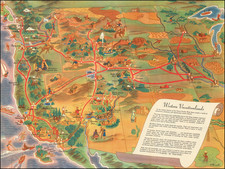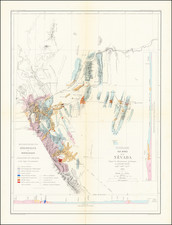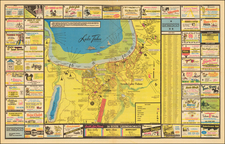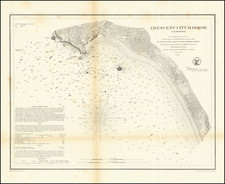The Earliest Profile Views of the Coast of Upper California
Detailed set of profile views of the Coast of California, including Santa Barbara, San Diego (2 views), San Francisco, Point Reyes & Drake's Bay, and Point Pinos and Cape Colnett, south of Ensenada, drawn by Thomas Heddington.
Vancouver's expedition is generally considered to be the second non-Spanish European expedition to explore the coast of Upper California and the first to result in printed graphic depictions from actual observations. There were no commissioned artists on Vancouver's expedition. Thomas Heddington (1776-1860), a midshipman, was one of the crew members who made drawings of the new territory.
The view of Santa Barbara shows a number of buildings, including the Mission of Santa Barbara. The view of San Diego extend from Point Loma to the modern day National City area.
The views appeared in the official account of Vancouver's expedition, A Voyage of Discovery to the North Pacific Ocean and Round the World, 1791-1795. Published in 1798 to wide public acclaim, Vancouver’s narrative greatly increased the European public’s knowledge about the Pacific Coast.
George Vancouver (1757–1798), a naval officer and explorer, grew up in King’s Lynn, England, the youngest of six children. After entering the Royal Navy in 1771, he served in both the second and third great exploratory voyages of James Cook. During Cook’s second voyage, a three-year quest to find a legendary southern continent, Vancouver received instruction from the astronomer William Wales. During Cook’s third voyage, to the Pacific Northwest, Vancouver was part of the first known group of Europeans to land on the coast of present-day British Columbia.
Vancouver gained valuable navigational, surveying, and mapping experience in the Pacific Northwest during his time with Cook. After returning from Cook’s third voyage in 1780, Vancouver was promoted to lieutenant and spent the following nine years serving on fighting ships, primarily in the Caribbean.
In 1790, Vancouver was chosen to captain the Discovery and charged with a mission to discover and chart the vast areas of the Pacific that were still unknown, in part to locate a Northwest Passage between the Atlantic and Pacific Oceans. This four-year voyage of discovery circumnavigated the globe and eliminated the possibility of an inland Northwest Passage. During many months of surveying, Vancouver produced detailed regional maps of the Northwest Coast, as far north as Alaska. He also established several hundred place-names for physical features in the areas surveyed.
Upon returning to England in 1795, Vancouver’s voyage received little recognition, and he faced personal and political attacks from colleagues and crew members alleging abuse of power. With his health failing, Vancouver spent his remaining years in retirement, revising his journal for publication. His Voyage of Discovery to the North Pacific Ocean, and Round the World was first published in 1798, which was also the year of his death. It contained a multi-volume account of his voyage as well as an atlas of his maps. His exploration and mapmaking activities greatly increased knowledge of the North American coast.









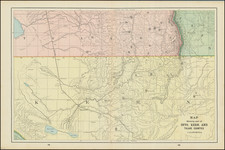
![[Touring Map of California]](https://storage.googleapis.com/raremaps/img/small/76578.jpg)
